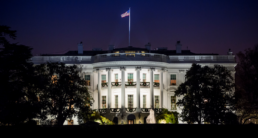Lately, our clients have expressed much concern about the lengths to which the current administration is able to alter the state of immigration in the U.S. with executive orders. Understandably, our current headlines cause stress and confusion—especially for individuals and families navigating the U.S. immigration system.
So let’s take a moment to break this down and clarify what a President can and cannot do when it comes to U.S. law, particularly immigration law.
Only Congress Can Make or Change Laws
The U.S. Constitution gives the power to create laws to Congress, not the President. That means:
- Only Congress can pass a new law or repeal an existing one.
- For immigration, this includes things like visa categories, eligibility requirements, quotas, and more.
- A bill must pass both the House and Senate and be signed by the President to become law.
So, when it comes to big, structural immigration changes—like creating a new visa program or changing who qualifies for a green card—those can only happen through legislation, not a presidential order.
What About Executive Orders?
This is where things get a little more nuanced. While the President can’t make laws, they can issue executive orders and proclamations. These allow the President to manage federal agencies and prioritize how existing laws are enforced.
Think of it like this:
- Congress sets the rules
- The President decides how those rules are carried out (within limits).
Examples of what a President can do with executive action:
- Direct CBP or USCIS to focus on certain types of cases.
- Temporarily pause or change enforcement priorities (e.g., who gets deported first).
- Halt or resume travel from specific countries (usually tied to national security).
- Clarify how existing regulations are interpreted (within the law).
But here’s the key: Executive orders cannot contradict existing law. If they do, they are often challenged—and struck down—by the courts.
A Real-World Example
You might remember the DACA program. President Obama created DACA through executive action to protect certain undocumented youth from deportation. But because it wasn’t passed by Congress, the program has faced legal challenges and uncertainty ever since.
That’s the risk with executive orders—they’re powerful but temporary. They can be reversed by the next administration, and they often end up in court.
Why This Matters
When news headlines say “the President is going to change the law,” it’s usually a misunderstanding of how our system works. While the President has significant influence over immigration policy, lasting change comes from Congress.
So if you’re feeling anxious about what you’re seeing in the news, remember:
- Not every announcement equals a law.
- Most executive actions are limited and temporary.
- You still have rights, and due process matters.
While the President has significant influence over immigration policy through executive orders, only Congress has the power to create or change laws. It’s important to understand the distinction between executive actions and legislative changes. For lasting changes to immigration law, Congress must pass new bills. While news stories may cause concern, it’s essential to remember that temporary actions often don’t equate to permanent legal changes. For expert guidance on navigating these complex matters, Berardi Immigration Law is here to help.
Ready to have Berardi on your side?
Whether you’re a business looking to hire or a professional hoping to relocate, immigration law can be complicated. But you don’t have to do it alone. Put our experience to work for you.



